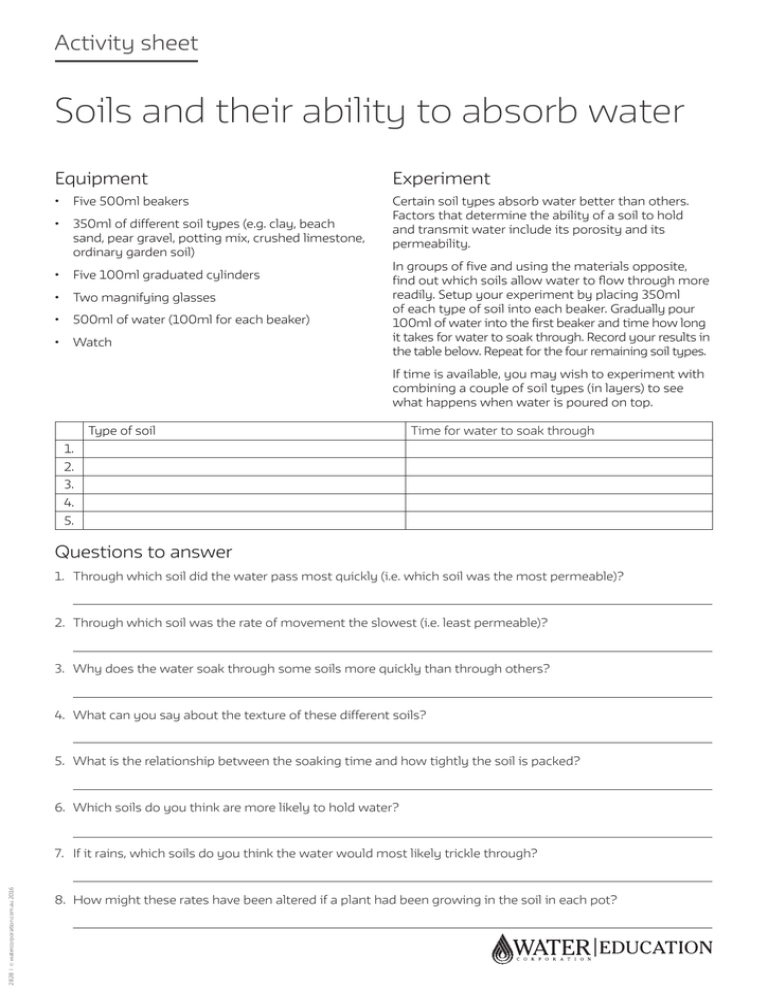Soils and their ability to absorb water
advertisement

Activity sheet Soils and their ability to absorb water Equipment Experiment •Five 500ml beakers Certain soil types absorb water better than others. Factors that determine the ability of a soil to hold and transmit water include its porosity and its permeability. • 350ml of different soil types (e.g. clay, beach sand, pear gravel, potting mix, crushed limestone, ordinary garden soil) •Five 100ml graduated cylinders • Two magnifying glasses • 500ml of water (100ml for each beaker) •Watch In groups of five and using the materials opposite, find out which soils allow water to flow through more readily. Setup your experiment by placing 350ml of each type of soil into each beaker. Gradually pour 100ml of water into the first beaker and time how long it takes for water to soak through. Record your results in the table below. Repeat for the four remaining soil types. If time is available, you may wish to experiment with combining a couple of soil types (in layers) to see what happens when water is poured on top. Type of soil Time for water to soak through 1. 2. 3. 4. 5. Questions to answer 1. Through which soil did the water pass most quickly (i.e. which soil was the most permeable)? 2. Through which soil was the rate of movement the slowest (i.e. least permeable)? 3. Why does the water soak through some soils more quickly than through others? 4. What can you say about the texture of these different soils? 5. What is the relationship between the soaking time and how tightly the soil is packed? 6. Which soils do you think are more likely to hold water? 2828 | © watercorporation.com.au 2016 7. If it rains, which soils do you think the water would most likely trickle through? 8. How might these rates have been altered if a plant had been growing in the soil in each pot?


